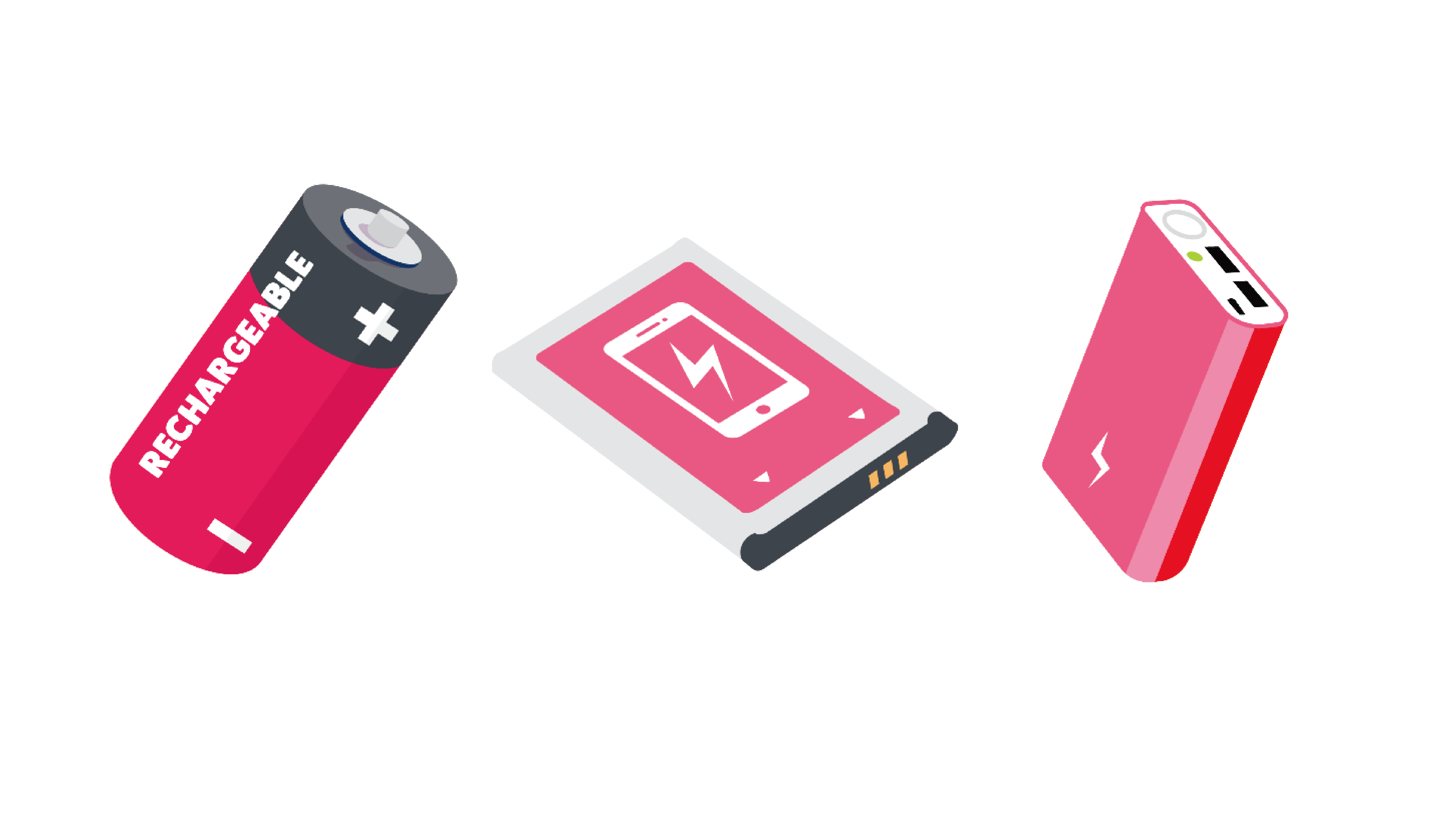Rechargeable Battery Recycling Programme - FAQ

The batteries we use daily are broadly divided into primary batteries (or so called disposable or single-use batteries) and rechargeable batteries. Primary batteries cannot be used again once used up, whereas the rechargeable batteries are designed to be used more than once and rechargeable up to 1,000 times.
Apart from the packaging and labelling on the batteries, you may observe that the chemical compositions of primary batteries and rechargeable batteries are different. Lithium-ion (Li-ion), Nickle Cadmium (Ni-Cd) and Nickle Metal Hydride (NiMH) are commonly used for rechargeable batteries, while zinc carbon and alkaline manganese are found in primary batteries. The rechargeable batteries are more environmental friendly than primary batteries as they can be re-used for many times to reduce the waste generation.
If the standby time of your battery is substantially reduced after it is fully charged, this is a general indication the battery is near the end of its useful life and may need replacing. Consult the equipment supplier in case of uncertainty.
For safety reason, please place a piece of non-conductive electrical tape such as masking tape to cover the battery terminals to prevent contact between terminals or other metal surfaces during storage and transport. For batteries that are vulnerable to damage, please put them in a plastic bag (e.g. reuse the packaging of new batteries) and seal them with adhesive tape before deposit.
No. For safety precautions, we do not suggest the public to put damaged rechargeable batteries into the collection boxes. Otherwise, the whole lot of collected batteries might get contaminated. You can properly contain the damaged battery in a plastic bag appropriate for its size and weight, after seal up, disposed of at garbage bin.
The Programme receives and recycles rechargeable batteries generated from households, including Li-ion, Li polymer, NiMH and NiCd but does not cover lead acid batteries. Lead acid batteries generated from commercial and industrial premises should be handled as chemical waste under the Waste Disposal (Chemical Waste) (General) Regulation.
